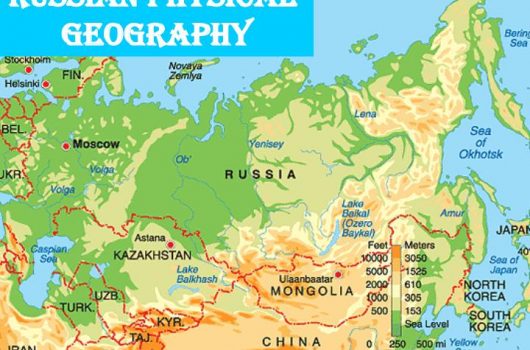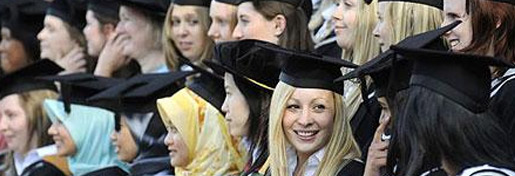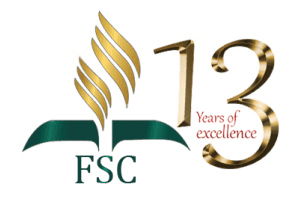Facts About Russia
Location and Geography


In addition to being the largest, the Russian Federation is one of the world’s northernmost countries. It encompasses 6,592,658 square miles (17,075,000 square kilometers), from its borders with Finland, Estonia, Latvia, Belarus, and Ukraine on the west to the Bering Strait in the far northeast and from its borders with Georgia, Azerbaijan, Kazakhstan, Mongolia, and China in the south to the Arctic Ocean in the north. European Russia, the most densely populated, urbanized, and industrialized region, lies between the Ukraine-Belarus border and the Ural Mountains. Seventy eight parent of the population lives in this area.
The great plains are divided by six ecological bands. In the northeast, above the Arctic Circle, lies a huge expanse of frigid, occasionally marshy tundra, a nearly unpopulated region where much of the land is permanently frozen and little grows but moss and shrubs. Below that is the taiga, a vast expanse of coniferous forest, which gradually blends with a band of mixed coniferous and deciduous forest to cover half the country. The capital, Moscow, is in the center of this region, where much agriculture has been located despite the thin, poor soil. A line of mixed forest and prairie with more arable soil characterizes the central areas, followed by Russia’s “breadbasket,” the black earth belt that constitutes less than a tenth of the national territory. Below that, the relatively arid steppe, with grasslands and semidesert and desert regions, runs along the northern edge of the Caucasus Mountains and north of the Caspian Sea beyond the Volga River basin into Central Asia.
History and Population
In July 1999, the population was estimated at 146,393,000, a decline of more than two million since the end of the Soviet Union in 1991. The current figure includes several million immigrants and refugees from newly independent former Soviet republics. Since 1991, a stark drop in the birthrate has combined with a dramatic rise in the mortality rate. Average life expectancy for both men and women has declined since the 1980s.
This population decline is expected to worsen in the next decade. It is largely the result of the economic and social upheavals of the postsocialist period, which have impoverished the population and caused a decay of social services.
Growing unemployment, long-term nonpayment of wages and pensions, paid wages that are below the poverty line, unsafe working and road conditions, the spread of infectious diseases, and the impoverishment of public health care systems have caused stress, depression, family breakdown, and rising rates of alcoholism, suicide, homicide, and domestic violence. Circulatory diseases, accidents, and suicides attributable to alcohol abuse are the leading causes of death among men. Malnutrition, disease, industrial pollution, poor health care, and reliance on abortion for birth control have reduced fertility rates and increased maternal and infant mortality.
In 1999, Russians accounted for 81 percent of the population and were the dominant ethnic group in all but a few regions. Other major ethnic nationalities are Tatars (4 percent), Ukrainians (3 percent), Chuvash (1 percent), Bashkir (1 percent), Belarussian (1 percent), and Mordovians (1 percent). Dozens of other ethnic nationalities make up the remaining 8 percent. There has been a significant rate of intermarriage between ethnic populations. Until the twentieth century, the population grew steadily. The population of Russia in the twelfth century is estimated at seven million. By 1796, Russia had a population of thirty-six million, to which annexation had contributed greatly. In the 1850s, the population was sixty-seven million. The abolition of serfdom, accompanied by urbanization, industrialization, and internal migration in the second half of the nineteenth century, led to significant population growth, and by 1897 the population was 125 million. By 1917, the year of the Russian Revolution, the population had grown to 170 million. Famines, largely caused by civil war and the Soviet collectivization of agriculture, decimated the rural population in the 1920s and 1930s. In 1941, the population was around two hundred million. World War 11 caused the deaths of more than twenty million Soviet citizens. After the 1940s, population growth was slowed by the gender disparity and devastation of infrastructure caused by war.
The area now called Russia has always been multicultural. The Eastern Slavic tribes, the ancestors of modern Russians, traditionally are thought to have originated in the Vistula River valley in what is now Poland and to have migrated eastward in the seventh to the ninth centuries. Other evidence suggests that Eastern Slavic pastoral peoples were widespread in the central and eastern portions of the plain that stretches across the northern half of the Eurasian continent a thousand years earlier, coexisting with Finnie and Lithuanian tribes to the north and enduring recurring waves of conquest.
Wars after the death of Prince Yaroslavl the Wise in 1054 caused the gradual disintegration of Kievan Rus’ until 1240, when Kiev fell under the domination of the Mongol Empire. The fall of Kievan Rus’ and the political fragmentation that followed divided the Eastern Slavs into three distinct cultural-linguistic groups: Ukrainian, Belorusian, and Russian. The Mongols destroyed many cities and towns, and created a complex administrative system to exact tribute from its peoples and princes; Mongol control lasted until the late fifteenth century, although with less impact after 1380. The political power and territorial control of Muscovy expanded greatly under the four-decade reign of Ivan Ill, who died in 1505 after routing the Mongol armies. From that time on, the Russian state developed and expanded, with Moscow at its center. Ivan IV (the Terrible) was the first to crown himself tsar in 1546. He ruled in an increasingly arbitrary and absolutist fashion, brutalizing the aristocratic boyars in a decade-long period of terror known as the oprichnina. The century’s end brought the “Time of Troubles”-fifteen years of political instability and civil and class strife that resulted in widespread impoverishment and famine, enserfment of the peasantry, and waves of migration of peasants to the edges of Russian territory.
Under Peter the Great, the Romanov tsar who ruled from 1682 to 1725, Russia began a period of imperial expansion that continued into the Soviet period. Peter attempted to modernize and westernize the country militarily, administratively, economically, and culturally, often through the use of force. His reforms changed society irrevocably, particularly through his introduction of new military and agricultural technologies, a formal educational system, a tight system of class ranking and service, and the founding of the European-style city of Saint Petersburg. Peter moved the capital from Moscow to Petersburg, where it remained until after the 1917 revolution.
After Peter’s reign, Russian imperial rule expanded southward into the Crimea, southeast along the Volga River, and eastward across the Siberian forests to the Pacific Ocean. Through further expansion during the Soviet period (1917-1991 ), Russians achieved political and demographic dominance over a territory equal to one-sixth of the world’s land surface. After 1991, Russian geopolitical power declined, but the federation remains the largest country in the world.
Society and Culture
The Russian Geographical Society (RGO) is a learned society based in Saint Petersburg, Russia. It promotes exploration and geography with research programmers in fields including oceanography and ethnography. Learning about the Russian culture is an excellent way to improve your Russian and understand Russian-speaking people. Russian culture has a rich history, strong traditions and influential arts, especially when it comes to literature, philosophy, classical music, ballet, architecture, painting, cinema and animation. These resources will help you to learn about many aspects of the Russian cultural heritage and make learning Russian more fun. Discover Russian traditions, gift ideas, fashion trends, games, jokes, toasts, and everything else that is typical of Russia and its people.
Economy
The most common food is bread. Potatoes, cabbage, carrots, and beets are the standard vegetables; potatoes are a staple. Onions and garlic are used liberally, especially in soups, stews, and salads. Russians generally love meat. Starvation means having no bread, while poverty means going without hard sausage kolbasa. Sausage, pork, beef, mutton, chicken, and dried or salted fish are widely available and relatively cheap. Only some can afford to buy delicacies such as veal, duck, sturgeon, and salmon. Traditional aristocratic fare included such fancy foods, many of which are popular among the newly wealthy classes today.
For most people, breakfast is a quick snack of coffee or tea with bread and sausage or cheese. Lunch is a hot meal, with soup, potatoes, macaroni, rice or buckwheat kasha, ground meat cutlets, and peas or grated cabbage. This meal may be eaten in a workplace cafeteria at midday or after people return home from work; a later supper may consist of boiled potatoes, soured cabbage, and bread or simply bread and sausage.
Basic Economy. The Soviet command economy provided a secure living standard for the entire population. Production systems were highly developed, technologically specialized, and spread strategically throughout the country.
Almost all consumer and industrial products were produced within the nation or in the Soviet bloc countries. With the end of state support in 1991, many production enterprises declined or collapsed, and imports of higher-quality products reduced the market for domestic goods. This is true of consumer goods such as electronics, fashion, housewares, and automobiles as well as industrial, scientific, medical, construction, and agricultural equipment. As a result of collapsing markets, poor management, and ill-conceived privatization processes, many factories sit idle, while others have been dismantled and sold off. Some sectors, such as the food processing and distribution industries, are staging a slow comeback through modernization and a commitment to providing affordable local products.
The chronic shortages of the Soviet era led many people to produce for themselves. The current impoverishment has increased the importance of this practice, with a significant portion of the population partially dependent on their own produce. Many rural people raise food products for sale, and up to 80 percent of the vegetables consumed are produced in small private plots. The major crops grown by large agricultural enterprises are grain, sunflower seeds, and sugar beets. Livestock production has declined because of reduced government subsidies for feed and falling demand.
Cost of Living
Living costs in Russia are about RUR 27 000 per month (excluding dormitory room. Medical Insurance costs approximately RUR 2 000 per 3 months (depends on chosen services).
To conclude the agreement to study at Russian University you should pass exams and submit to the department of international studies of the chosen faculty the following documents:
Education System
Education in Russia is organized and coordinated by the state, which ensures that general education is free and available for everyone. Most schools are state schools but private schools have also been established in recent years.
Education usually begins with pre-school before the age of six, although it is not compulsory. Children typically go to kindergartens or other pre-schools which focus on both intellectual and physical activities. The next step is primary school, which is part of the general education program.
General education in Russia comprises three stages: primary education, which lasts for four years; basic general education lasting for five years and secondary education which lasts for two to three years. General education normally consists of 34 weeks of study per year and 27 to 36 hours of study per week. The academic year typically runs from 1 September to the beginning of June. School examinations are in June.
The language of instruction is Russian in all state-accredited educational institutions, except in pre-schools. Citizens of the Russian Federation also have the right to receive their basic general education in their native languages.
General education is compulsory. The basic curriculum for has some compulsory fields of study such as the Russian language, foreign languages, mathematics, history, politics, natural sciences etc. Every school designs its own curriculum, which is based on state requirements, and there can be some extra or optional disciplines.
In Moscow, there are also schools that specialize in certain subjects, such as math’s, music, arts, and sports. These schools can also offer extra education for children, alongside the general courses. After completing primary and basic general education, the students participate in final examinations. They are awarded a Certificate of Basic General Education, Attestat ob Osnovom Obshchem Obrazovani, which entitles the student to be admitted to either secondary general education, to vocational education or to non-university level higher education.
After completing the secondary general education, the students need to pass the State final attestation (final examinations), after which they will be awarded a Certificate of Secondary General Education, Attestat ob Sredem Obshchem Obrazovani. This school leaving certificate will allow students to continue to higher education: either vocational education or both non-university and university level education.
Recently, new types of secondary schools have emerged called gymnasium and lyceum, which can be both state owned or private. The duration of studies can exceed that of secondary general schools, and the educational programs can be more advanced. In total, general education takes 11 years to complete. Children are enrolled in schools at the age of six and normally they finish school by the age of 17. If Russian poses a language barrier, there are also a number of international schools in Moscow offering education in English or in other languages.
Information Specific to International Students
According to International Institute of Education (IIE), in 2019 there were over 334,000 International Students in Russia, out of which approximately 300,000 students were enrolled in undergraduate and postgraduate courses.
Over the past three years, the number of foreign nationals studying full time at domestic universities has increased by 20 percent. Statistics prove that Russian higher education is popular abroad. The bulk of foreign nationals came from the Commonwealth of Independent States. Kazakhstan, Turkmenistan, Uzbekistan and Tajikistan became the top origin countries. As for other states, the number of Asian students increased by 17.6 percent to 57,362 in the designated period. In the Middle East and Africa, Russia is also viewed as a study abroad destination as the number of students from those regions increased by 19 percent to 31,360.





